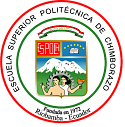Design and Implementation of an Automatic Compactor System for PET using Hydraulic Elements
DOI:
https://doi.org/10.47187/perspectivas.vol1iss1.pp36-41.2019Keywords:
Arduino, Plastic Bottle, Load Cells, Automatic Compactor, Hydraulic, LabView, Logo Siemens, PET, Automatic SystemAbstract
The main purpose of this degree work was to design and implement an automatic system of polyethylene terephthalate compactor (PET) by using a hydraulic system. The automatic compactor system is formed by the container structure, the electronic system, and a control system by software. The container was constructed of galvanized steel showing resistance to external agents such as water and humidity, which protects the integrity of the internal electronic systems. The electronic system; was formed by two controllers: the main controller Arduino One; was programmed to handle communication with the load cells, and then, it sends this information to the Siemens Logo secondary controller. This secondary controller is programmed to the control of hydraulic solenoid valves since they handle control signals of 24 Volts, by generating actions to the activation of the hydraulic cylinder that compacts the plastic bottles at a calibrated pressure of 700 Newton. The plastic bottles were compacted previously to their control to avoid the entrance of bottles of another material. The control system was developed in LabView where monitoring and control of the automatic system in real time were performed with a friendly interface for the user. The compaction of plastic bottles PET made possible to reduce the volume of each bottle by 58%, reducing the volume occupied by plastic waste, and facilitating the recycling process of plastic bottles. It is concluded that the use of hydraulic technology in the compaction system, generated a high level of constant hydraulic pressure in the cylinder, thus getting an appropriate response of the automatic system, since leaks or pressure losses at the time of compaction are not generated. It is recommended to incorporate a human machine interface (HMI) to the system enabling users to see the information generated by the system in real time.
Métricas
References
MINISTERIO DE AMBIENTE. Ecuador incrementó la recolección de Botellas PET. (En línea).2012. (Consulta: 10 de agosto 2017). Disponible en: http://www.ambiente.gob.ec/ecuador-incremento-la-recoleccion-de-botellas-pet-en-2012/
GARCÍA, E. Automatización de Procesos Industriales (1a edición). México: Alfaomega. (2002).
LOMBARD, M. SolidWorks 2010 Bible. (1a edición). Indianapolis: Wiley Publishing. (2010).
PATIÑO, A. Diseño y construcción de una máquina Compactadora manual de botellas de Plástico Pet. [Tesis Pregrado]. Pontifica Universidad Católica del Perú, Lima, Perú. (2013). Disponible en: http://tesis.pucp.edu.pe/repositorio/handle/123456789/4501.
OGATA, K. Ingeniería de Control Moderna. (5a edición). Madrid-España: PEARSON. (2010).
http://www.ambiente.gob.ec/ecuador-incremento-la-recoleccion-de-botellas-pet-en-2012/.(1)
Published
How to Cite
Issue
Section
License
Copyright (c) 2019 Rolando Tipán, Verónica Mora, Edwin Altamirano

This work is licensed under a Creative Commons Attribution 4.0 International License.
Copyright
The authors of the manuscripts will retain their copyright on their articles published in Pespectivas Journal. These rights allow the authors to present their manuscripts in public, prepare derivative works, reproduce them physically by printing and distribute them on their social or research networks. These rights will remain unchanged as long as the authors respect the publication and free access policy of Perspectivas Journal.
Publication Rights
Perspectivas Journal reserves all first publication rights on each of the articles that the authors have sent to its review and publication process. It implies that authors will only exercise their copyright if they state the source and origin of the publication correctly, mainly when they distribute, share, present, or use their articles' total or partial content.














